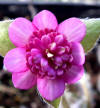|
Mutated (full and half-filled) flowers from seed
A mutation is an "error" in the genom, which makes the flower looks
different from the normal. It is especially plena and semiplena flower
that are attractive.
Flowers usually have a number of
stamens and pistils, which means that the plant can be pollinated and
propagated by seeds, thus ensuring the species' survival. A mutation
often gives
more or less sterile flowers.
In the following I will tell
you how you by cross-pollination can produce
mutated plans from seed. You can choose which plant species you prefer,
the condition is simply that you can obtain a mutated basic material.
Hepatica is well suited for
the purpose. It is variable, comes very quickly in bloom after sowing
(3-4 years), has a good size and can be grown in pots on the table in
the greenhouse, which is preferable when pollinating, watching the seeds
and so on.
I have especially concentrated
on H.japonica and H.nobilis, as well as crossings between these two, but
other species can of course also be included. However, one must be
prepared for the result of crosses between different species
maybe will become sterile.
Pollination:
Let me start by saying a little about the pollination itself - we begin
with the single flowering:
When the flower opens, the pistils are ready for pollination, and it is
a good idea to pollinate as early as possible. The younger pistils the
better fertilization ability. The pistils can become too old. How long
to go is a bit difficult to say, because it depends on the temperature -
the cooler weather, the longer durability.
The stamens are divided into two chambers which open and let out the
pollen independently of each other. It happens when the weather is warm
and sunny. Often you can see with the naked eye when the stamens are
open, but if you use a magnifying glass it is easy to follow the
development. They get a "woolly" look when the pollen is out and often
sprinkles the pollen down on the petals.
If you want to pollinate with pollen from another flower, all stamens
must be removed from the "mother" as soon as the flower pops out,
otherwise you risk a self-pollination.
Remove some stamens from the "father" using a tweezers
and gently drive them over the pistils on the "mother" and thus a
pollination has taken place.
After fertilization, the pistils closes and becomes dark.

Figure 1. The seeds begin to develop, which lasts
approx. 6-8 weeks depending on the temperature, the colder the longer
the maturation time.
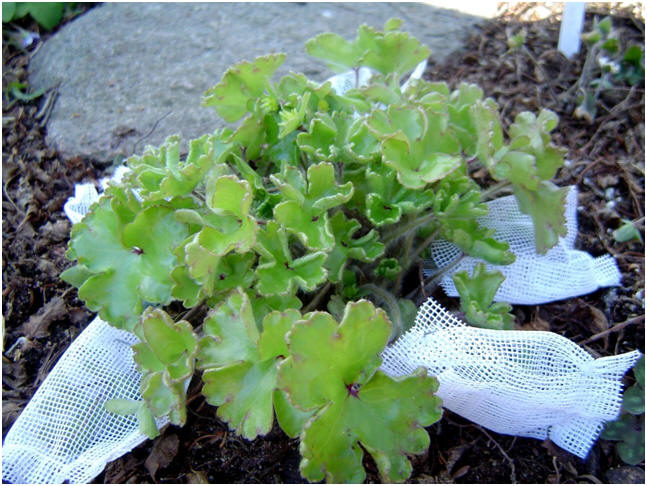
Fig 2. To "catch" the seeds, I have sewn small bags of thin
water-permeable fabric that I put on the stem.
Mutations:
As
mentioned before, errors in the genome can occur and the flower can
change appearance. There are several different forms of mutated flowers
that cause the flower to become more or less infertile (sterile).
To create an overview of the types of flowers that exist and which we
can use in the breeding work, I will review the HIS’s (International
Hepatica Society) division into types. Hepatica has here been divided
into 9 types, depending on the appearance of the flowers. Hepatica
breeding is very Japanese dominated and it is IHS also, so the nine
types are found among Hepatica japonica. Some of the types are also
found among the European Hepatica nobilis, so the division can also be
used for H. nobilis. It is a good idea to use this HIS dividing, then
you always know exactly what type of flower is involved. See also the
article "Division into types",
where the 9 types are described in more detail.
As said, IHS has found 9 different types of flowers at Hepatica
japonica. I have allowed myself to add another 2 types, that as well as
I know, are only found in Hepatica nobilis (see 10 and 11).
1.
Has both pistils and stamens - the number of petals is irrelevant.
Available in
japonica and nobilis
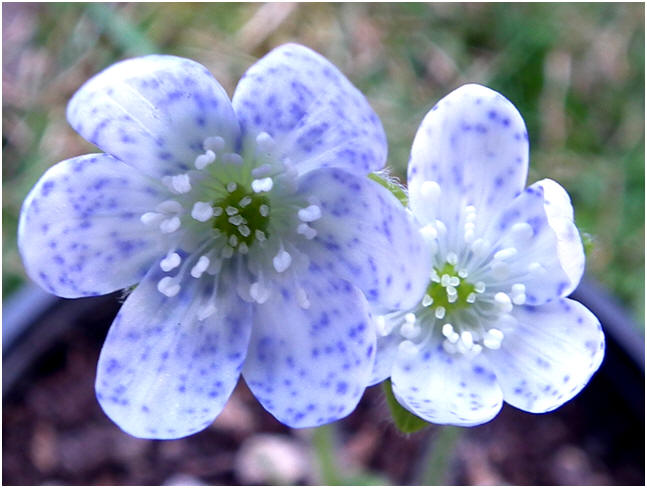
Hepatica nobilis
’Bavarian Blue’ - type 1
2.
Otome-zaki (zaki means flower and is just added to tell
it is the flower's appearance it's all about).
Otome means
virgin and this type has fully-developed pistils but lacks stamens.
The type is
known both by japonica and nobilis - in Europw called "virgin".
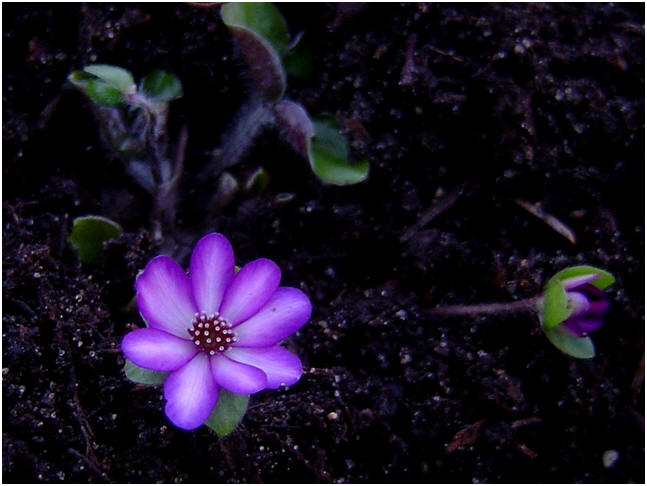
Hepatica
japonica
’Murasakiotome’ - type 2
Nichirin zaki.
Nichirin means a ring around the sun. The stamens
are transformed into a ring of short flat-lying petals.
The pistils are fully developed.
Available only at japonica.

Hepatica
japonica
’Tori no Saezuri’ – type 3
2.
Nidan-Zaki.
Nidan = 2, in the meaning 2-layer
flower.
Almost like type 3, but the transformed stamens are longer.
The pistils are fully developed.
Available only at japonica.
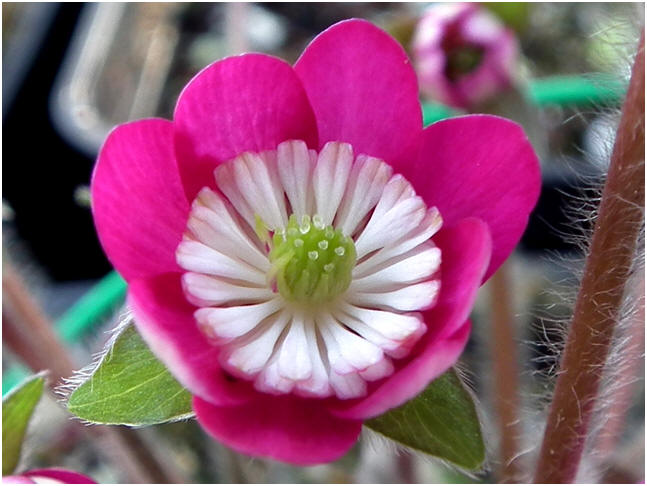
Hepatica japonica
’Haato no Kingu’ – type 4
5.
Chyouji-Zaki.
Means garlic.
Just like the previous one, but the
stamens have by this type turned into curly petals.
The pistils are fully developed.
Available only at japonica.
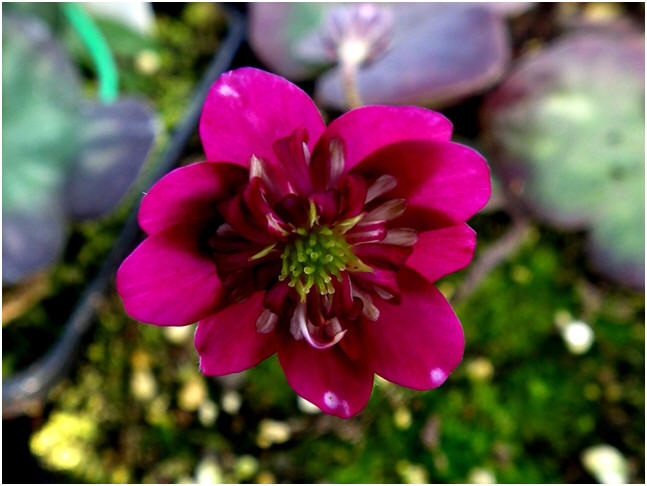 Heparica japonica – type 5
Heparica japonica – type 5
6.
Karako-zaki is named after an old Chinese hairstyle.
It is available both with and without pistils.
The stamens are converted into petals.
Available only at japonica.
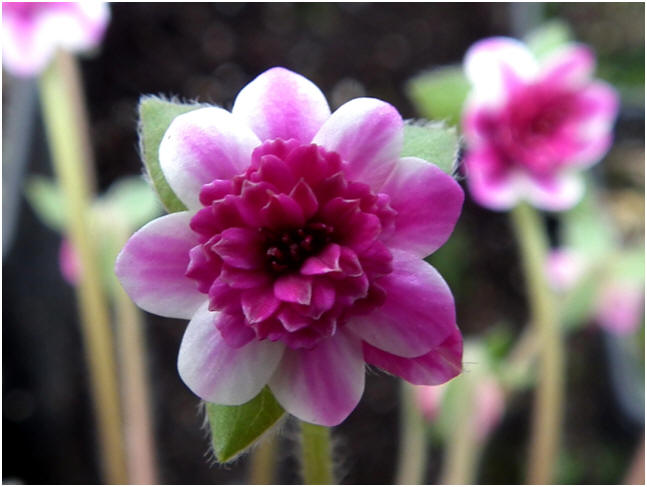
Hepatica japonica
’Momohananbi’ – type 6
7.
Sandan-Zaki.
San means 3 - a 3-layer flower.
Both stamens and pistils are basically converted to petals, but often
this type produce stamens containing pollen and can thus be used in the
crossing work.
However, it can be difficult to get hold of the pollen because the
stamens do not open by themselves and let out the pollen as in type 1.
You can help it a little on the way by, with a scalpel, cutting a
scratch on both sides of the stamen.
Put the plant warm and then the pollen will emerge.
It is a somewhat difficult process
because the filaments are thin and easily breaks, so you can instead
pick up the stamens and crush them and "lubricate" the whole mass on the
pistils on the selected "mother".
The type is found both in japonica and nobilis.
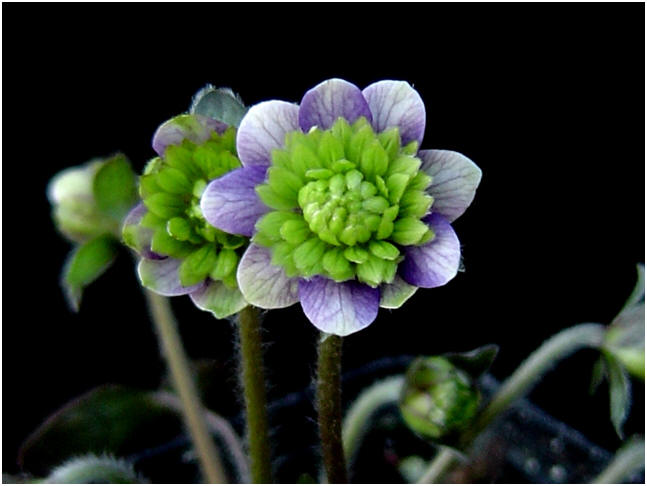
Hepatica japonica
- Sandan-zaki type withput stamens – type 7
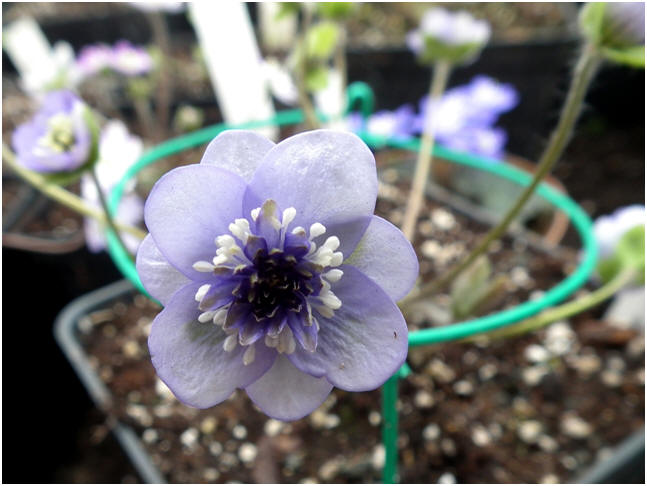
Hepatica nobilis
’Andersen’s Dream’ - Sandan-zaki type with anthers and pollen – type 7
8. Senne-zaki or also called Senju-zaki is the type we
know as flora plena.
Both pistils and stamens are converted into petals.
It is found both in japonica and
nobilis.
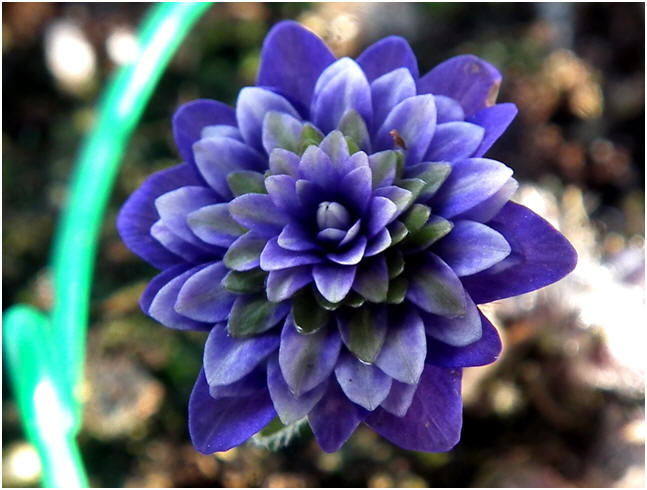
Hepatica japonica
’Kaow’ – type 8
9.
Yousei-Zaki.
Yousei means alpha or fairy.
It is the
newest type and has features from several of the previous ones.
Both pistils
ans stamens are converted into petals.
Available only at japonica.
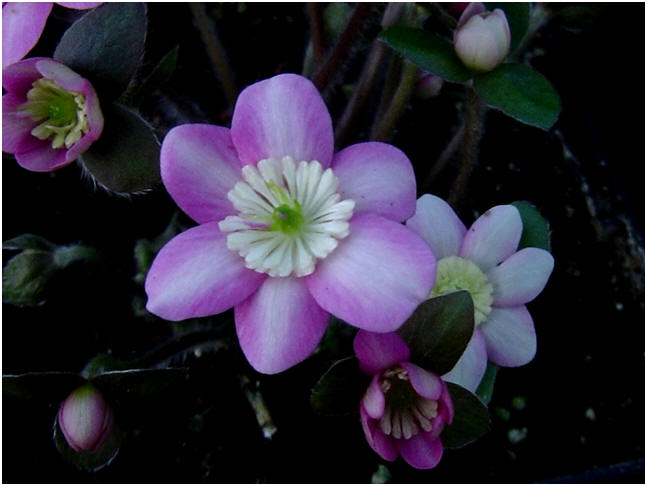
Hepatica japonica
– type 9
10 is a type of flower found only by H.
nobilis.
The pistils are converted into petals,
but the stamens are intact and contain pollen.
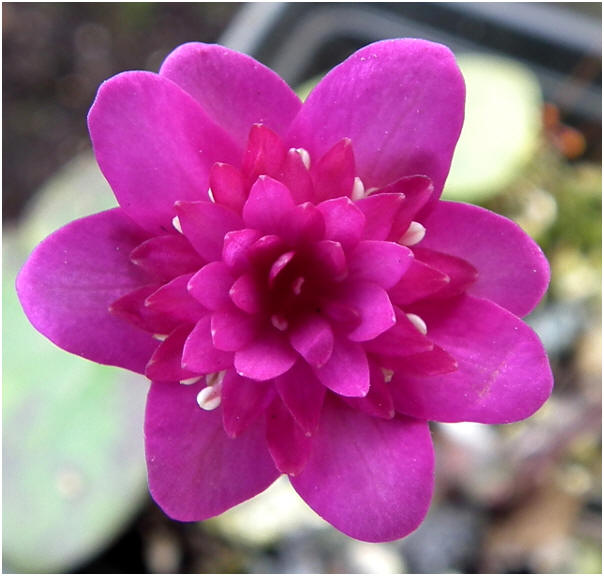
Hepatica nobilis
’Gaia’ GP – type 10
11 is also a type found only by H.nobilis.
The pistils are converted into petals, but sometimes there may be some
intact pistils. The stamens
which are containing pollen are intact.
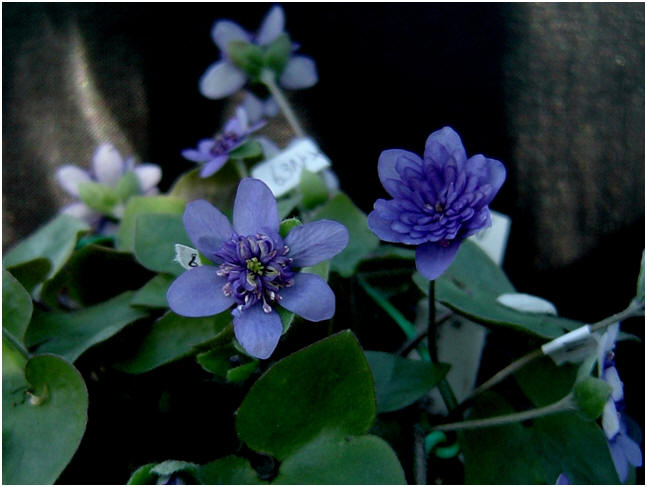
Hepatica nobilis "Ida" - type 11.
Here you see how some of the flowers are plena, while others have both
pistils and stamens.
The white labels are my crossing information.
Crossing:
The pollination itself can be done in slightly different ways.
You can take pollen from type 1 and pollinate type 2, 3 or 4. Or you can
take pollen from type 5, 10 or 11 (see procedure described under type 5)
and pollinate type 1.
The seeds and plants you get from the mentioned pollination are called
F1 which means first generation.
According to Mendel's law of heredity, the single-flowering gene is
dominant, while the mutant is recessive. Because our F1 plants have
inherited both a mutated and a single-flowered gene from the parents,
the F1 plants will bloom with single flowers.
We now have plants that have both pistils and stamens, but at the same
time contain a mutated gene.
These plants we can self-pollinate or cross with each other. The result
is F2 - 2nd generation of seeds and plants, and it is in this 2nd
generation that the mutated flowers will occur.
It is said that 10% will bloom with mutated flowers, but my own
experience shows that it can vary a lot. In some H. nobilis I have got
50% mutated flowers, while other F1 plants have not given any at all.
At H.japonica I have got up to 90% mutated flowers in a seed team.
However, I think it is because the H. japonica I have used for
pollination has been crossed for several generations back in Japan
before they left with me.
At Hepatica nobilis one can more easily start from the zero point, and
it gives a very great satisfaction to get a good result from a material
that you yourself have produced from scratch. Of course, this gives a
bigger waste because one has to try it out, but gradually one finds the
"good" F1 plants.
Always remember to make records of each plant so you know it for
generations. Gradually, one also figure out which mutated plants have
"good" genes and which are less good.
I can only urge to start cross-pollinating and breeding mutated flowers
from seeds. It is the most exciting and interesting thing I have worked
on in my years with plants.
I would like to show some of the results I have achieved, both within
Hjaponica and H. nobilis.
At first H.japonica:
Look more
here
NOBILIS:
Look more
here
X EURASIA (japonica x nobilis):
I have also
tried to cross japonica and nobilis.
My idea was
to produce plants that were as variable as japonica and as hardy as
frost as nobilis.
Most crosses
between japonica and nobilis are fertile, but there are some who are
sterile.
Look more
here
|


















